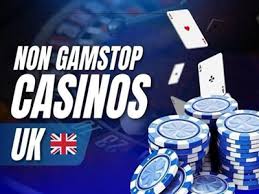www.seegreatart.art
Exploring the Connection Between Sports and Art
maio 19, 2025 - www.seegreatart.art

Exploring the Connection Between Sports and Art
The relationship between Exploring the Connection Between Sports and Art sports & art has been a topic of discussion for centuries. While sports often evoke feelings of physical prowess and competition, art embodies emotional depth and creative expression. At first glance, these two worlds might seem distinct, operating in separate spheres of culture. However, a deeper examination reveals that they are intertwined in various intriguing ways.
The Historical Context
To appreciate the connection between sports and art, one must first understand their historical development. Ancient civilizations often merged athletic competitions with artistic pursuits. For example, the ancient Greeks celebrated physical excellence through the Olympics, where victors were honored with statues and monuments. These artistic depictions were not simply trophies but representations of ideal human form and spirit.
Similarly, in the Renaissance, the celebration of the human body and movement drew inspiration from both athletes and artists. Artists such as Michelangelo and Leonardo da Vinci meticulously studied anatomy, using their observations of athletes to create lifelike sculptures and paintings. This blending of disciplines illustrated a shared fascination with the human experience, adjusting perceptions of beauty and strength.
Art Inspired by Sports
Throughout modern history, numerous artists have drawn inspiration directly from sports. For instance, the American painter George Bellows famously captured the energy and dynamism of boxing in his series of paintings that celebrated the sport. His work not only depicted the physicality of the athletes but also explored themes of struggle and triumph, serving as a metaphor for the human condition.
Similarly, contemporary artist Kehinde Wiley incorporates sporting themes into his artwork, challenging traditional representations of race and identity. By placing Black athletes in historical poses typically reserved for European royalty, Wiley redefines power dynamics within the art world and showcases the aesthetic elegance of sports figures.
The Influence of Sports on Artistic Movements
Beyond individual artworks, the influence of sports has permeated entire artistic movements. The Futurist movement in the early 20th century celebrated speed, movement, and the energy of modern life, often drawing parallels to the motion found in athletic competition. Futurist artists like Umberto Boccioni created works that emphasized kinetic energy and Angular techniques, mirroring the intensity of sports.
Moreover, the rise of Street Art and Graffiti culture has been heavily influenced by sports. Many street artists use urban environments as their canvases, often referencing sports culture and its symbols. Within this subculture, many artists are athletes themselves or deeply passionate about sports, merging their love for art and competition in unique ways.

Sports as Performance Art
Sports can also be considered a form of performance art. The act of competing on a field or court can evoke emotion and inspire spectators, much like a theatrical performance. The choreography involved in a ballet or modern dance can parallel the grace seen in gymnastics or figure skating. The focus on athleticism, artistry, and emotive storytelling blurs the lines between the two disciplines.
Events like the Olympics showcase this phenomenon on a grand scale, where athletes not only compete in their respective sports but also manifest artistic expression through their movements. Choreographed routines in synchronized swimming or the aesthetics of a pole vault can transcend traditional sports and enter the realm of art.
The Role of Photography and Film
Photography and film play pivotal roles in capturing the essence of this connection between sports and art. Iconic sports photographers like Neil Leifer and Tony Duran have immortalized defining moments in sports history through their lenses, creating visual art that speaks to the viewer’s emotions. Their works transform fleeting moments of athletic achievement into timeless pieces of art.
Documentaries and films about athletes and sporting events also convey artistic narratives. From the cinematic beauty of the slow-motion capture of sprinters crossing the finish line to the emotional stories explorated in films like “Rocky” and “Rudy,” these art forms combine storytelling, music, and visuals to enhance the viewer’s connection to the sport.
Community and Social Movements
Both sports and art have the power to bring communities together and inspire social movements. Artistic expressions often emerge from sporting events and reflect the cultural identities of communities. Murals in urban areas depict local sports heroes or commemorate significant sporting events, fostering pride and unity among residents.
Social movements have used sporting events as platforms to create awareness and amplify voices. Athletes like Colin Kaepernick and Muhammad Ali utilized sports to share their political statements, blurring the lines between their athletic identities and their artistic expressions as activists. In this way, sports serve as a canvas for change, much like art itself.
Conclusion
The connection between sports and art is profoundly intricate and multifaceted. From historical contexts to contemporary expressions, the two realms have enriched each other in ways that inspire creativity, foster community, and challenge societal norms. As we explore this connection further, we uncover the beauty in athleticism, the artistry in competition, and the shared humanity that binds these two disciplines together. Whether through the lens of a camera, the stroke of a brush, or the motion of an athlete, the celebration of life’s dynamism continues in both sports and art, providing endless opportunities for expression and exploration.
